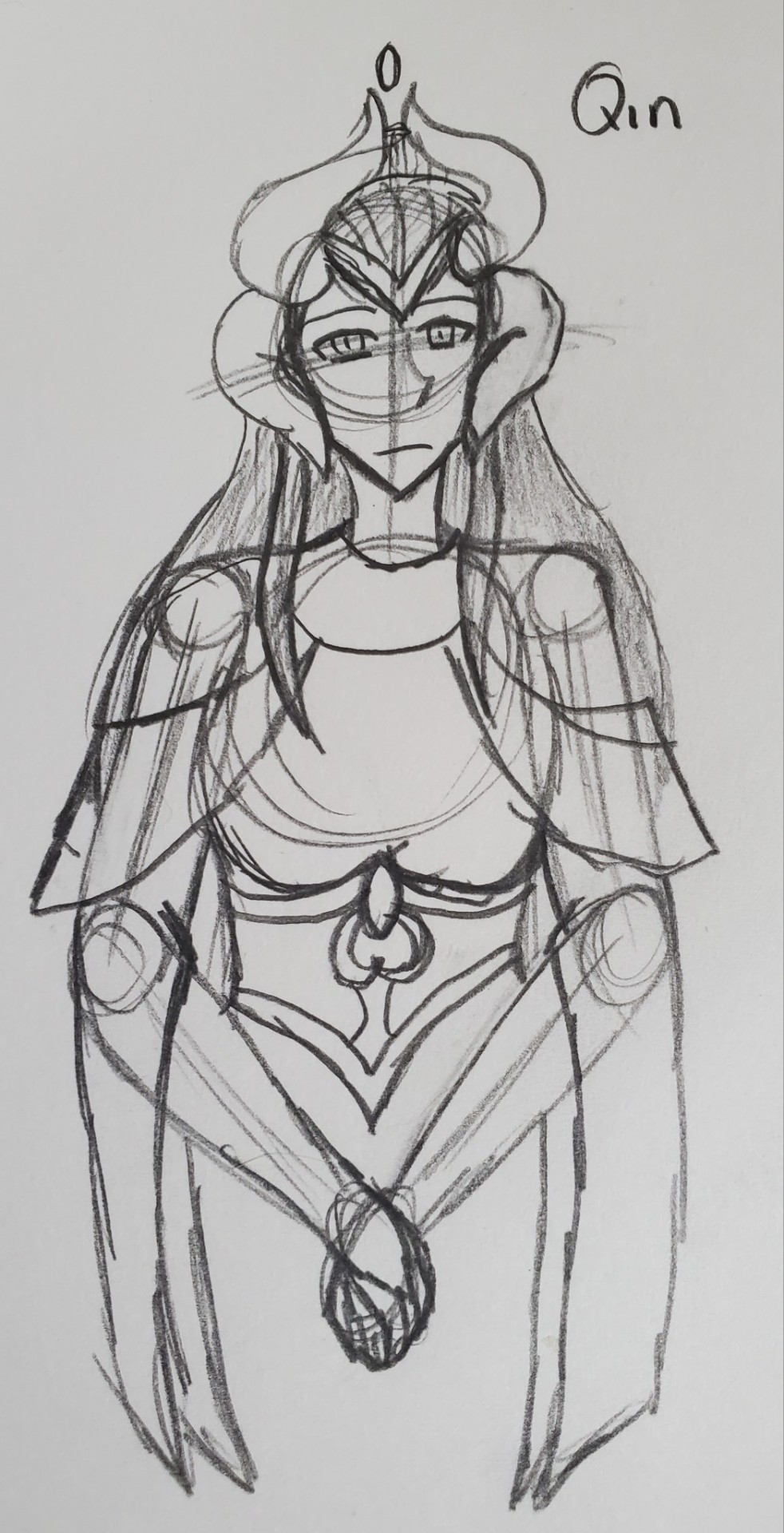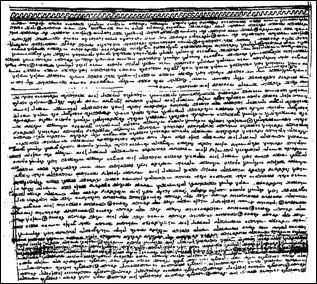#Mandaeism
Text

July 16, 2023: Members of the Sabean Mandaeans, a pre-Christian sect that follows the teachings of John the Baptist, perform rituals in the Tigris River in Baghdad, Iraq. (AP Photo/Hadi Mizban)
122 notes
·
View notes
Text
Abrahamic Faiths
Because I thought there were only three but it turns out there are more.
Abrahamic faiths are religions that worship the God of Abraham.
Judaism: Characterized by belief in the God who revealed himself to Abraham, Moses, and other prophets, and by living in covenant with God according to scripture and tradition
Christianity: Characterized by the belief that Jesus of Nazareth is the Messiah and the Incarnation of God
Islam: Characterized by following the teachings of Muhammad, who is viewed as the last prophet sent by God
Baháʼí Faith: Characterized by the belief that Manifestations of God have founded various world religions throughout history, with the most recent being the religion's founder, Baháʼu'lláh.
Druzism: Characterized by following the teachings of Hamza ibn ‘Alī ibn Aḥmad and by belief in reincarnation.
Gnosticism: Characterized by the belief that the world was created and governed by a lesser deity, while Jesus was a messenger of the supreme deity and enabled human redemption.
Mandaeism: Characterized by a lack of set doctrines and creeds and by revering John the Baptist as a major prophet.
Rastafari: Characterized by the belief that God partially resides in every person and by the reverence toward the Ethopian emperor Haile Selassie.
Samaritanism: Characterized by the belief that the Samaritan Pentateuch is the only true, unchanged version of the Torah.
#religion#religions#Abrahamic faiths#Abrahamic religions#faith#Judaism#Christianity#Islam#Baha'i faith#Druzism#Gnosticism#Mandaeism#Rastafari#Samaritanism
21 notes
·
View notes
Text

بسم الحي العظيم
مُسَبَّحٌ رَبِّي بِقَلْبٍ نَقِي
التسبيح الأول
التوحيد
كِنْزا رَبّا - الكنز العظيم
الكتاب المقدس للصَّابِئَة المَنْدائِيَّة
Image from Wikipedia
#ginza rabba#mandaean#mandaeism#mahdidarkdrop#كنزا ربا#الكنز العظيم#بسم الحي العظيم#التسبيح الأول#التوحيد#الصابئة المندائية#صابئة#مندائية
0 notes
Text
They consider Jesus to be a false prophet.
0 notes
Text

Sacramental bread, also called Communion bread, Communion wafer, Sacred host, Eucharistic bread, the Lamb or simply the host (Latin: hostia, lit. 'sacrificial victim'), is the bread used in the Christian ritual of the Eucharist. Along with sacramental wine, it is one of two elements of the Eucharist. The bread may be either leavened or unleavened, depending on tradition.
Catholic theology generally teaches that at the Words of Institution the bread's substance is changed into the Body of Christ (transubstantiation), whereas Eastern Christian theology generally views the epiclesis as the point at which the change occurs. Bread wasin the religious rituals of Mandaeism, Mithraism and other pagan cultures similar to that of ancient Egypt.
14 notes
·
View notes
Photo


the fact that the first time we probably meet Chat, he is going to be standing beside the West Rose Window of the Notre Dame Cathedral. The fact that this particular stained glass of this window depicts Madonna with the Child........ The woman who conceived through holy spirit..... which is usually depicted as dove... a bird... peacock..... ... .. also don§t let me start on mandaeism, ginza gnostic texts, history of early christianity, christian apocrypha, and this theory that Jesus and Jacob could have been twins...... ..... .. . ..... what is it in our collective human psyche that like once every few hundreds of years we rediscover the story of a mother who with a help of magical bird conceives twin boys .... 😳😳😳😳
113 notes
·
View notes
Text
tried to investigate and understand gnosticism again. Feel like a lovecraft protag. this is not for me to know. ever tried to wrap your head around mandaeism?? ever tried to figure out what the fuck the essenes were??? not kidding when i say it is IMPERATIVE we teach children about how the major religions began. you gotta teach them historical materialism about early christianity.
15 notes
·
View notes
Text




Decided to sketch out some female demons, these ladies are based on the Queens of the World of Darkness from Mandaeism. Hekesha is the only one that's mostly original, as Hekesha is, apparently, another name for Lilith.
Speaking of:

So far in my Mythology Mixup Story, Qin is one of the Primordial Beings, and considered a mother of the Succubi and Incubi, among other demon types. After her fall from Eden, Lilith was adopted into the family, but marries a different fallen angel instead of Lucifer.
The horns represents their age and power.
The designs are not final, aside from Lilith's.
#sketch#my thoughts: lilith#my thoughts: qin#my thoughts: ruha#my thoughts: zahreil#oc: hekesha#demonology
3 notes
·
View notes
Note
At risk of being controversial i believe I found the best parallels between the Abrahamic religions and the nations of Scandinavia. The Swedes are the Christians of Scandinavia, the Norwegians are the Muslims of Scandinavia, and finally the Danes are the Jews of Scandinavia. Feel free to rearrange though
As a follow up to blow people's minds. Canada is the Norway of North America. The United States is the Sweden of North America. Mexico is the Denmark of North America.
so i know i saw somebody else recieve and answer this exact ask before. and ive tried to figure out who it was. but i can't remember who received it? can anybody remember who else recieved this ask. iirc they wrote a longpost about why they didnt' think the comparisons were true or someshit
anyways like. ok so anon obviously this is nonsense or something BUT like i wanna commend u on comparing TRICHOTOMIES instead of dichotomies. i am frequently annoyed and bored by dichotomies. with your trichotomies i am frightened and confused. is this an improvement? i do not know.
if u insist on this path, i think u should consider what other north american (central american + carribean) countries are like, mandaeism, samaritanism, druzism, uhhhh baha'i ig? what other faiths acknowledge abraham. or u could not
3 notes
·
View notes
Photo

March 14, 2023: Followers of the Sabean Mandaean faith, a pre-Christian sect that follows the teachings of the Bible’s John the Baptist, perform rituals in the Tigris River during a celebration marking “Banja,” or Creation Feast, in central Baghdad, Iraq. Iraqi Sabaean Mandaeans view John the Baptist as their central prophet and submerge themselves in the Tigris during an annual five-day ritual.
(AP Photo/Hadi Mizban)
168 notes
·
View notes
Note
my projected 182,704 word fanfic, formulated after over 10 years of radical Eva analysis, explores this issue -- and more
https://archiveofourown.org/works/38031127
神戦記エヴァンゲリアイ : 孔雀土曜の戦争と冬
~Sacred blood in the sky above, sacred blood in the sea below, and the daughters of God & Man ever warring in between~
The year is 293 since the Third Impact and the making of the New World. For centuries, the Republic of Lilinswille, guarded by Evas made from Lilith's divine body, has stood firm against a resurgent Seele's tyrannical empire.
Now Seele has launched a major new offensive. Five young Lilinswille pilots have been dispatched to defend a fortress in the far north. Their fates may be intertwined with the destiny of not only the Lilin, but of all mankinds- if they and their mothers can survive the onslaughts of war and their own emotions.
A rather unconventional, distant sequel to the original Evangelion.
Tags:
Post-Third Impact, Original Character-centric, Mecha, Worldbuilding, Religious Imagery & Symbolism, Qabbalah, Gnosticism, Mandaeism, Ero-guro
Endorsed on the tags alone, that is a beatiful sentence - this is the *only tagged 'Mandaeism' story on Ao3*, what a find. I will make an exception to my 'promotional' ban for this ask, gonna give it a read.
9 notes
·
View notes
Text
I am afraid of being alone.
Yes!
I’ll admit it.
Not that I ever doubted it.
But I’ve seen FAR too many people using someone’s loneliness as an excuse to badger them with proselytising.
Specifically with regards to Christianity.
(I can’t say the same for other religions due to demographics in my area, plus some other religions don’t proselytise (Judaism, Druze, Mandaeism, and Yazidism spring to mind))
ESPECIALLY with Christianity!
“Well, have ye thought about God? Jesus?”
“Oh dear. Well ye’ll be sorry when ye’s older.”
Fuck off with that shite!
Belittling condescension!
Talking as if we were lost, frightened, helpless children!
I grew up with it and found it lacking and offering nothing but unrequited obedience, shame at simply existing as I am, along with perpetual misery and an eternal fear of judgment and damnation.
And some people call THAT a new counterculture?! Be RID of it!
Fucking bullshit!
Keep your proselytising to yourself! That shit needs to end fucking yesterday.
The world doesn’t need any more missionaries!
(And no, cold, nihilistic, bullying, judgmental atheism isn’t the answer either. I tried it and was found wanting!)
Get in the fucking BIN with that shite!
That’s why I lost patience with (western) Catholicism.
To say nothing of Protestantism, most of it is dull, austere and demanding, and has stupid ideas about work ethic and the like. (Fuck Calvinism btw! A ghastly miserable thing!)
I want NONE of that!
Bunch of nasty, bitter, judgmental, miserable, godbothering old women!
Don’t try selling me any of that shite!
No I’m not bitter, shut up!
And don’t even get me started on school reunions.
#dougie rambles#personal stuff#vent post#loneliness#among other things#religion#christianity#catholicism#protestantism#proselytizing#bullshit#anti proselytizing#fuck missionaries#drivel#misery#fucking hell#fucking morons#fucking brainrot#brainrot#brainrot in action#fuck proselityzing#judaism#druze#mandaeism#Yazidism#fear#atheism#condescension#school reunion
3 notes
·
View notes
Text
For a time, John the Baptist must have been more famous than Jesus, certainly he's the better historically attested figure. Maybe Mandaeism wasn't just a post-hoc back-construction from Christianity. Probably not. Would be funny though, the entire religion can fit in Cowboys stadium.
1 note
·
View note
Text
History of Iraq
Iraq is a nation in West Asia and the Middle East region of geopolitics. Its official name is the Republic of Iraq. With more than 46 million people living there, it is the thirty-first most populated nation. The republic is a federal parliamentary one with eighteen governorates. Iraq's borders are as follows: Saudi Arabia to the south, Jordan to the southwest, Syria to the west, Iran to the east, the Persian Gulf and Kuwait to the southeast. Baghdad is the largest and capital city. The population of Iraq is diverse, comprising primarily Arabs as well as Kurds, Turkmen, Assyrians, Armenians, Yazidis, Mandaeans, Persians, and Shabakis. The country's topography and fauna are also rather varied. The majority of people in Iraq are Muslims; other minorities practice Christianity, Zoroastrianism, Mandaeism, Yazidism, and Yarsanism. Arabic and Kurdish are the official languages of Iraq; Turkish, Suret, and Armenian are also acknowledged in some areas.
The League of Nations established a Mandate for modern-day Iraq in 1920. Under Faisal, a monarchy with British support was established in 1921. In 1932, the Hashemite kingdom separated from the United Kingdom. The kingdom was toppled and replaced with a republic in 1958. From 1968 until 2003, the Ba'ath Party, first under Al-Bakr and subsequently under Saddam Hussein, governed Iraq as a one-party state. Iraq fought Iran in two wars: the first, from 1980 to 1988, resulted from the invasion of Kuwait; the second, from 1990 to 1991. An assault carried out in 2003 as part of the US-led coalition's "War on Terror" started a conflict that concluded in the collapse of the Ba'athists and the execution of Saddam, and it was followed by an insurgency and a sectarian civil war. The conflict was declared over in 2011 after US forces started to leave in 2008. Following protests against the sectarian policies and accompanying ongoing persecution of Nouri al-Maliki's government, a combination of Ba'athist and Sunni militias launched an offensive. The ISID's onslaught, which signaled the group's quick territorial expansion and marked the campaign's culmination, led to the withdrawal of US forces from the conflict, which continued until 2017. Since 2014, Iran has also become more involved, extending its sway through Khomeinist armed groups and sectarian organizations, which has led to massive demonstrations.

The City

Ur was a significant Sumerian city-state in ancient Mesopotamia that stood where Tell el-Muqayyar is today in the Dhi Qar Governorate in southern Iraq. Ur used to be a coastal city close to the Persian Gulf's Euphrates River mouth, but the river's mouth has since moved, and the city is now well inland on the south bank, 16 km (10 mi) from Nasiriyah in modern-day Iraq. The town was founded during the Ubaid period, approximately 3800 BC, and it was first mentioned in written history in the 26th century BC as a city-state under King Tuttues.
The Persian Gulf's current water level was two and a half meters higher when Ur was created. Therefore, it is assumed that Ur was surrounded by marshes; irrigation would not have been required, and the city's obvious canals were probably utilized for transportation. It's possible that fish, birds, tubers, and reeds sustained Ur's economy without the necessity for the agricultural revolution that's occasionally suggested as a precondition for urbanization.
0 notes
Text
The Haran Gawaita and the Baptism of Hibil Ziwa


The Haran Gawaita and the Baptism of Hibil Ziwa
The Haran Gawaita and the Baptism of Hibil Ziwa by E. S Drower. The Haran Gawaita or Inner Haran is a Mandaean text which tells the history of the Mandaeans and their arrival in Iraq as Nasoreans from Jerusalem. According to the Haran Gawaita, John the Baptist was baptized, initiated, and educated by the patron of the doctrine of Nasirutha ("secret knowledge"), Anuš-ʼuthra, the hierophant of the sect. According to Drower, the Mandaeans were one of the earliest key Gnostic sects. Many of the original Nasoraeans became Christians and in Modern Israeli Hebrew the term Notzrim has come to simply mean Christians.
Download the free PDF e-book here:

The Haran Gawaita and the Baptism of Hibil Ziwa
Who were the Nasoreans?
The term "Nasoreans" often refers to the Nasara or Nasaraeans, an early religious sect also known as the Nazarenes. This group should not be confused with the inhabitants of Nazareth, nor should it be directly associated with what is commonly understood as mainstream Christianity today.
Here is some context about the Nasoreans or Nazarenes:
- Early Christian sect: The Nasoreans, or Nazarenes, were one of the early sects in the diverse spectrum of Christianity, believed to have emerged in the first century. They have been described in different historical and religious contexts, sometimes as Jewish Christians who strictly kept Jewish law and traditions but acknowledged Jesus as the Messiah.
- Connection with Jesus of Nazareth: The term "Nazarene" is also associated with Jesus, often called "Jesus of Nazareth." However, the Nasoreans as a sect were distinguished by their specific religious practices and beliefs, which may have included observing the Torah and other customs that were more aligned with Judaism.
- Distinct from mainstream Christianity: As Christianity evolved and various doctrines became solidified with the mainstream Christian church's development, the Nasoreans, among other sects, were often sidelined, suppressed, or declared heretical due to their beliefs and practices. This was because their perspectives often did not align with the theological direction set by the emerging dominant Christian church.
- Later interpretations and Mandaeism: The term "Nasorean" has also been associated with groups like the Mandaeans, known for their gnostic teachings and possibly for being followers of John the Baptist. They had distinctive beliefs, including a dualistic worldview and a rejection of Jesus as the Messiah. Their religious literature and traditions set them apart from both mainstream Jewish and Christian groups.
The historical understanding of groups like the Nasoreans is complex due to the scarcity of primary sources and the difficulty in interpreting the texts that do exist. Much of the early history of these groups is reconstructed from accounts written by outsiders, often those who opposed them, which further complicates an unbiased historical understanding.
Read the full article
0 notes
